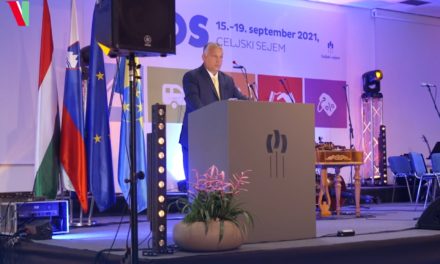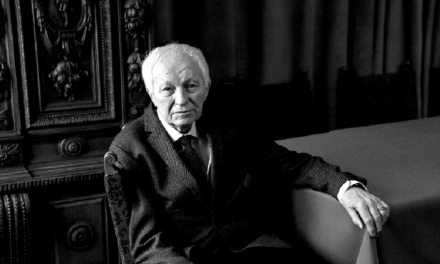The Tisza Party attracts voters who want a change of government like a magnet, the parliamentary opposition parties are desperate, Fidesz has already priced in their insignificance and is building a strategy in response to the new balance of power.
Hungarian public life was thoroughly disturbed after the HVG published the new Median poll, according to which the gap between Fidesz and the Tisza Party narrowed further from July to September:
• from 11 to 5 percentage points in the entire voting-age population,
• the distance between the two parties decreased from 12 to 4 percentage points among the sure voters who could choose.
It is much more illustrative if we consider the data as the Fidesz-KDNP standing at 43 percent of the sure voters who can choose, while the Tisza Party stands at 39 percent.
Since 2010, no opposition party has been able to get so close to the ruling parties. The advance of Péter Magyar's party is also spectacular if we take into account the fact that its result (29.60 percent) in the June European Parliament election has increased by 9 percent. What is also visible and reveals the political conditions of the parties is that the Tisza Party did not get votes from the government side in the past weeks, but from the old opposition parties (at least according to the Median research).
Fidesz-KDNP achieved 44.82 percent in the European Parliament election, while according to the current survey by Median, it stands at 43 percent among sure voters who can vote. So the government is keeping its camp, but at the same time it was not able to get stronger, and the Fidesz-KDNP will need additional votes against the Tisza until 2026, if the latter will continue to have the traction of the opposition (and it cannot be ruled out that there will be a drop-off in the also on the government side).
The traditional, old opposition parties are the biggest losers of the reorganization, according to the Median research, none of them, apart from Tisza, reach the 5 percent threshold necessary to enter the parliament. The most spectacular decline can be recorded in the case of the Democratic Coalition, since after the elections alone it was rated 8-9 percent, but now only 2-3 percent. The Median survey published in July measured Mi Hazánk at 7 percent among certain voters who can choose, but they are already below 5 percent (4 percent).
They expect the Tisza to strengthen
Of course, Péter Magyar celebrated the data of the research, the survey itself is another tool in his hands, with which he can act as the exclusive challenger of the government side and thereby attract the remaining voters of the other opposition parties. In addition to his Hungarian performance, he has been the most active opposition figure in recent weeks and months - he does not stop for a moment, pours out announcements, Facebook posts, comments, and successfully thematizes (for example, with the topic of healthcare or transport) the every day, while apart from Ferenc Gyurcsány and the Democratic Coalition, the entire parliamentary opposition seems to have capitulated.
In connection with the Median research and surveys in general, Gergely Gulyás Gulyás, the minister in charge of the Prime Minister's Office, was asked about the survey in general. and less than thirty.
Dániel Deák, the XXI. Század Institute's leading analyst, Megafon activist, wrote :
this is not the research that presents the reality, but this is the research that Péter Magyar needs after a period full of scandals. Endre Hann's "measurement" already offends our intelligence, we clearly see what it is about. His measurement strategy is always to measure something relatively accurate at the end, but away from the elections, he always measures what builds the narrative of the current opposition candidate. Well, that's all about the Median!
Gergely Gulyás called Péter Magyar's claim that internal surveys were made that show only a few percent difference between Fidesz-KDNP and Tisza as a lie. However, according to the information of the Index, there are concerns on the government side about the public opinion poll data. During our conversation a few weeks ago, a person close to Fidesz said that the Tisza Party could even reach 40 percent support.
A few days ago, there was someone who expressed his disbelief at Median's numbers and told us that the ruling parties could actually have a 7-8 percent advantage (that is, the Tisza could stand at 35-36 percent, which still means a 5-6 percent increase in the European Parliament compared to the 30 percent achieved in the election). In any case, the government is apparently counting on the further strengthening of the Tisza, and it is not in vain that they are working on a new strategy.
Viktor Orbán announced a new strategy
Before the Kötcs picnic, analyst-activist Dániel Deák, one of the regular participants of the meeting, said based on the government party's public statements, that Viktor Orbán should talk about how Fidesz can respond to the Péter Magyar phenomenon; the changed political structure needs to be interpreted, a new, well-thought-out strategy is needed. As it turned out, the prime minister did not remain in debt with this: even though he did not once mention Péter Magyar and the Tisza Party during his assessment of the domestic political situation, he explained that by 2026 the question will be who promises what kind of future, and the competition of futures for the government side you will have to win it.
Dániel Deák said after the picnic in Kötcs:
In 2026, the opposition will act differently, with a different actor, with a different formation, and by definition Fidesz's policy must be adapted to this, and Viktor Orbán spoke in detail about the technique and means of this in Kötcs.
He explained that it is necessary to be able to fight policy debates (such as on health care or transport), and that requires politicians who are able to do so. The prime minister wants influential politicians, but by that he did not mean politicking without content, but rather that the government's policy should be sold in a way that is comprehensible, accepted and using the platforms of modern communication.
"Sliding down the slope is always easier than climbing back up"
As for the old opposition parties, it is no wonder that the voices of most of their politicians are not heard, they are the most desperate. We talked to several actors in recent weeks:
there are those who no longer see the possibility of continuing, Péter Magyar has defeated the opposition's politics so much that there is no room for him, nor can he be countered.
Others plan to withdraw from national politics and build only in their individual constituencies until 2026, so that they can continue to work by winning the trust of the voters. The more optimistic still hope that the line-up can change, but they do not know how to critically politicize alongside the Tisza Party, or perhaps against it.
The old opposition parties have to face the fact that their set of politicians "went to the sculpture park" with the opposition voters, and if for some reason the Tisza stopped flowing or perhaps dried up, none of them would have 20 percent support again.
The pollsters we talked to in the background all said that, in the current situation, the parliamentary opposition parties, which have fallen below 5 percent, hardly have a chance to become a major or even a middle party. "Sliding down the slope is always easier than climbing back up," said one of them.
The general opinion about the Median numbers is that "a measurement is not a measurement", so the percentage points cannot be set in stone, but it can be stated that "the strong wins everything", the opposition voters flock to the Tisza. If the Tisza is not yet at 39 percent, it cannot be far from it, and it can even reach 40 percent at any time.
Back in June, Gergely Rajnai, the senior analyst of the Equity Policy Analysis Center, said:
Péter Magyar must make a very big mistake in order for DK to have a chance to lead the opposition again. Moreover, the party led by Ferenc Gyurcsány should be more careful to keep its current 7-8 percent of voters.
From the statements we have seen and the recent public opinion poll data, no other conclusion can be drawn than that Hungarian domestic politics has become bipolar, this is now the reality. Currently, there is no room for any other opposition party besides the Tisza Party, the parliamentary opposition parties are in a vacuum. For the time being, only Péter Magyar is still visible from the Tisza Party, the European Parliament and the work in the capital can answer whether there is a functional team behind him, a political formation, and an actual governing alternative.
Featured image: Memento Park Budapest/Facebook













